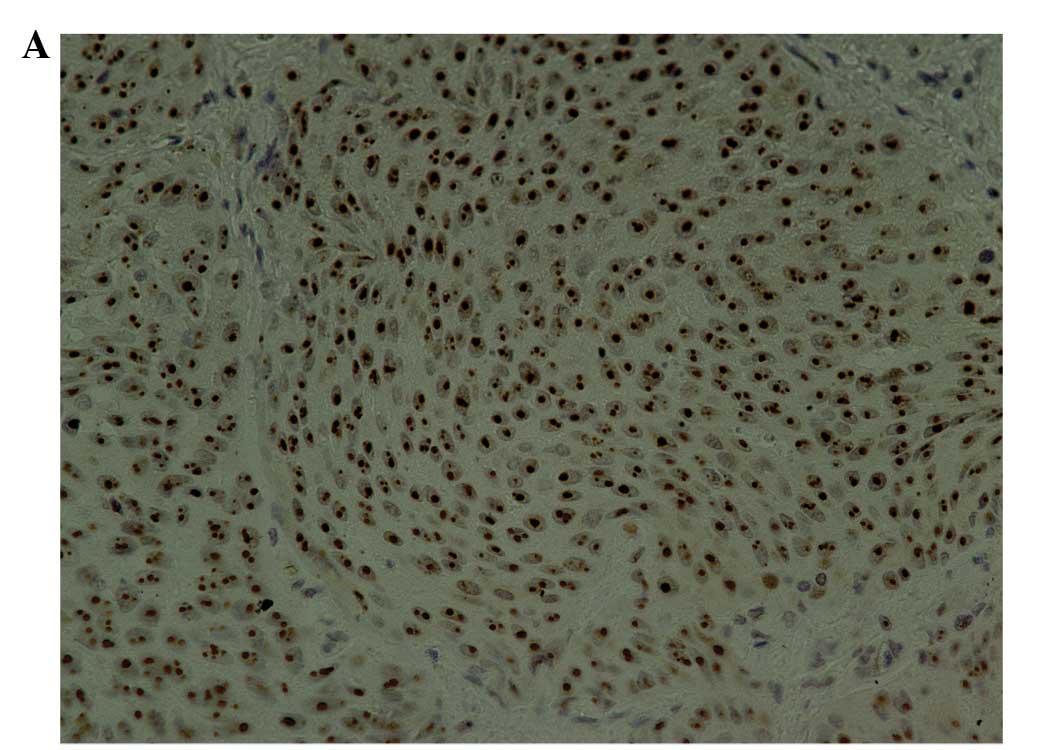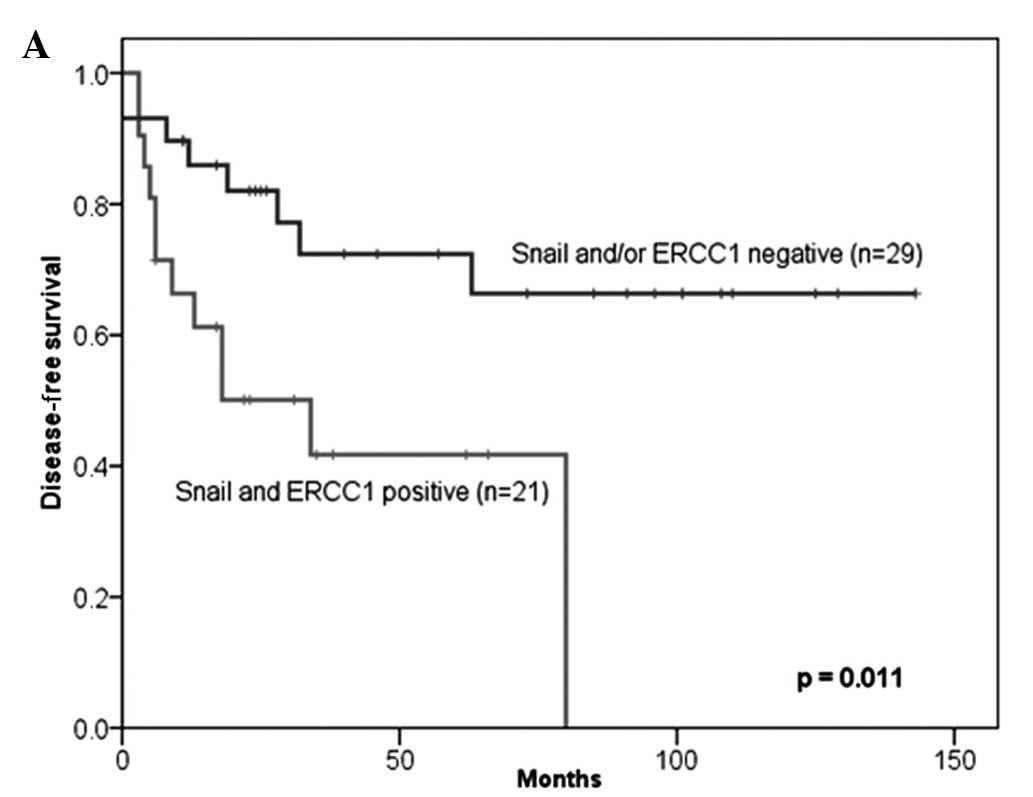Spandidos Publications style
Kawashima A, Takayama H, Kawamura N, Doi N, Sato M, Hatano K, Nagahara A, Uemura M, Nakai Y, Nishimura K, Nishimura K, et al: Co-expression of ERCC1 and Snail is a prognostic but not predictive factor of cisplatin-based neoadjuvant chemotherapy for bladder cancer. Oncol Lett 4: 15-21, 2012.
APA
Kawashima, A., Takayama, H., Kawamura, N., Doi, N., Sato, M., Hatano, K. ... Tsujimura, A. (2012). Co-expression of ERCC1 and Snail is a prognostic but not predictive factor of cisplatin-based neoadjuvant chemotherapy for bladder cancer. Oncology Letters, 4, 15-21. https://doi.org/10.3892/ol.2012.689
MLA
Kawashima, A., Takayama, H., Kawamura, N., Doi, N., Sato, M., Hatano, K., Nagahara, A., Uemura, M., Nakai, Y., Nishimura, K., Miyoshi, S., Kawano, K., Nishimura, K., Nonomura, N., Tsujimura, A."Co-expression of ERCC1 and Snail is a prognostic but not predictive factor of cisplatin-based neoadjuvant chemotherapy for bladder cancer". Oncology Letters 4.1 (2012): 15-21.
Chicago
Kawashima, A., Takayama, H., Kawamura, N., Doi, N., Sato, M., Hatano, K., Nagahara, A., Uemura, M., Nakai, Y., Nishimura, K., Miyoshi, S., Kawano, K., Nishimura, K., Nonomura, N., Tsujimura, A."Co-expression of ERCC1 and Snail is a prognostic but not predictive factor of cisplatin-based neoadjuvant chemotherapy for bladder cancer". Oncology Letters 4, no. 1 (2012): 15-21. https://doi.org/10.3892/ol.2012.689

















